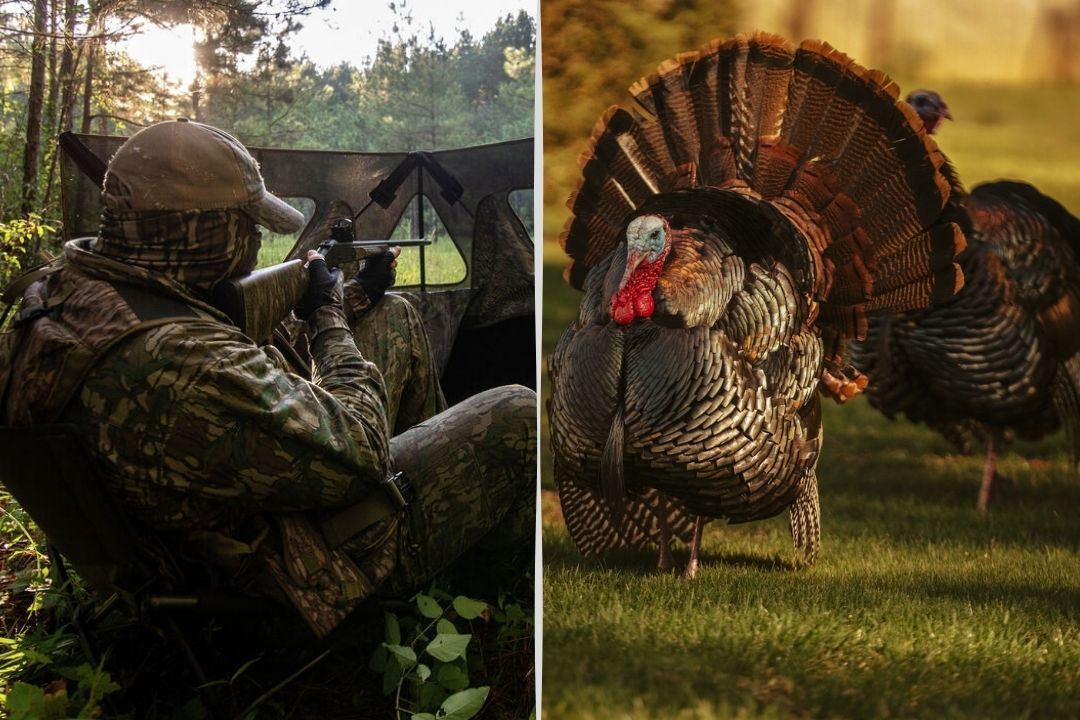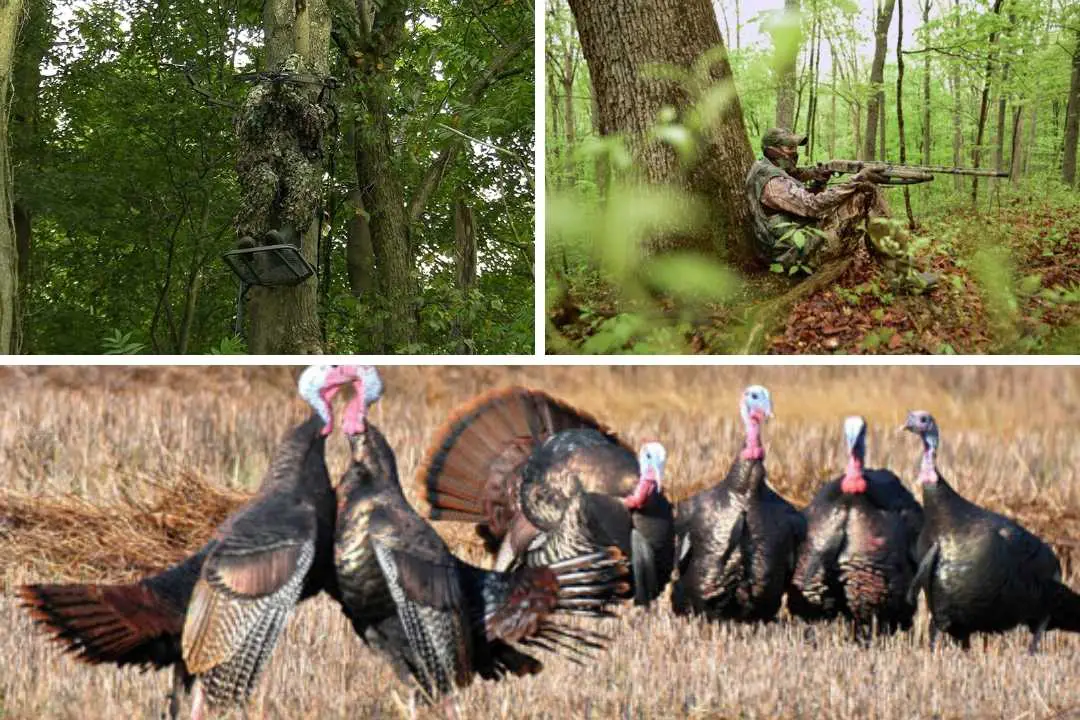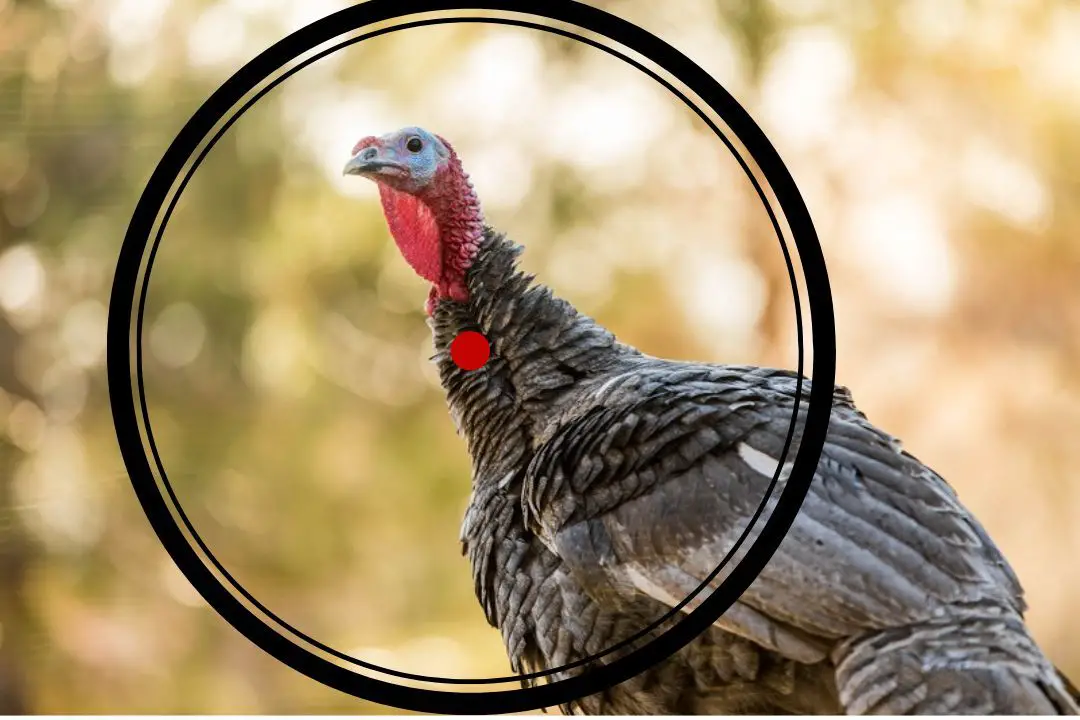Forget the Hype: Why You Should Avoid Tail-Fanning in Turkey Hunting
Is tail-fanning worth the risk? Discover the dangers of this turkey hunting tactic and learn safer, more effective strategies. Read to protect yourself on your next hunt.
We've all seen it – the tail fan, that flamboyant display meant to mimic a receptive hen. It's become synonymous with spring turkey hunting, a visual cue some hunters rely on to lure in gobblers.
Sure, those tail-fan takedowns make for great footage. But as seasoned turkey hunters, we know the real woods aren't always so cut-and-dried. There's often more to the story than flashy tactics.
A wary gobbler, a mistimed shot, a hidden hunter... things can unravel fast.
Let's delve into why that tail fan might be better left in your pack, and how to outsmart those birds without the risky theatrics.
Why Should You Avoid Tail Fanning Techniques While Turkey Hunting?
While it might seem like a surefire tactic, tail-fanning can be dangerous (mistaken identity by other hunters) and ineffective (gobblers often see through the ruse). Explore alternative strategies for a smarter, safer hunt!
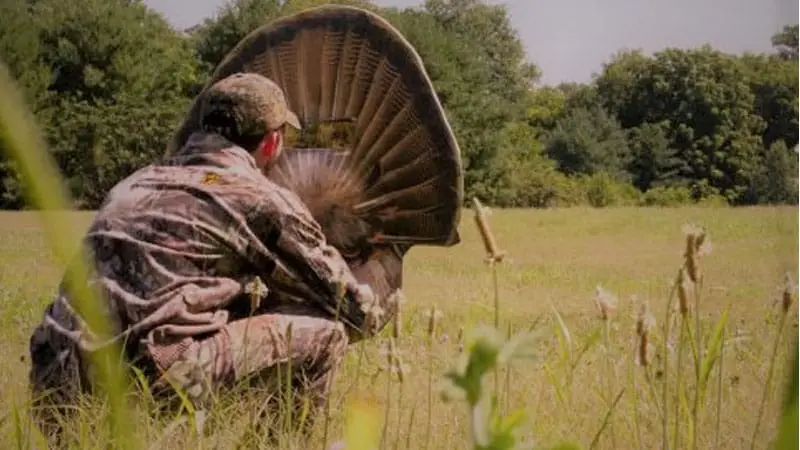
The Glaring Issue: Safety
Let's be blunt: turkey hunting with a tail fan (or commonly known as reaping) is like not wearing blaze orange while walking through deer blinds. The risk of being mistaken for a real bird by other hunters is just too damn high. Even the most experienced among us can make split-second mistakes when adrenaline surges.
- The Hard Truth: I'm not going to sugarcoat it, there have been accidents – injuries, even fatalities. It only takes one hasty shot, obscured vision, or a hunter disregarding basic safety protocols. No gobbler is worth that price.
- Beyond Skill Level: This isn't about being a novice. Even seasoned hunters get tunnel vision in the heat of the moment. That momentary glimpse of brown and feathers – it creates a dangerous gamble.
- Ethical Responsibility: Every time we step into the woods, we carry the weight of ensuring the safety of others and upholding the integrity of the sport. Tail-fanning, plain and simple, compromises that.
Think You're Safe? Consider This:
- Thick Brush: Overgrown fields or dense timber make proper target identification even harder.
- Low Light: Dawn and dusk, prime turkey time, also increase the chance of misidentification.
- Unpredictable Movement: You might hold still, but a breeze-blown fan or a slight repositioning could be all it takes to trigger someone else's shot.
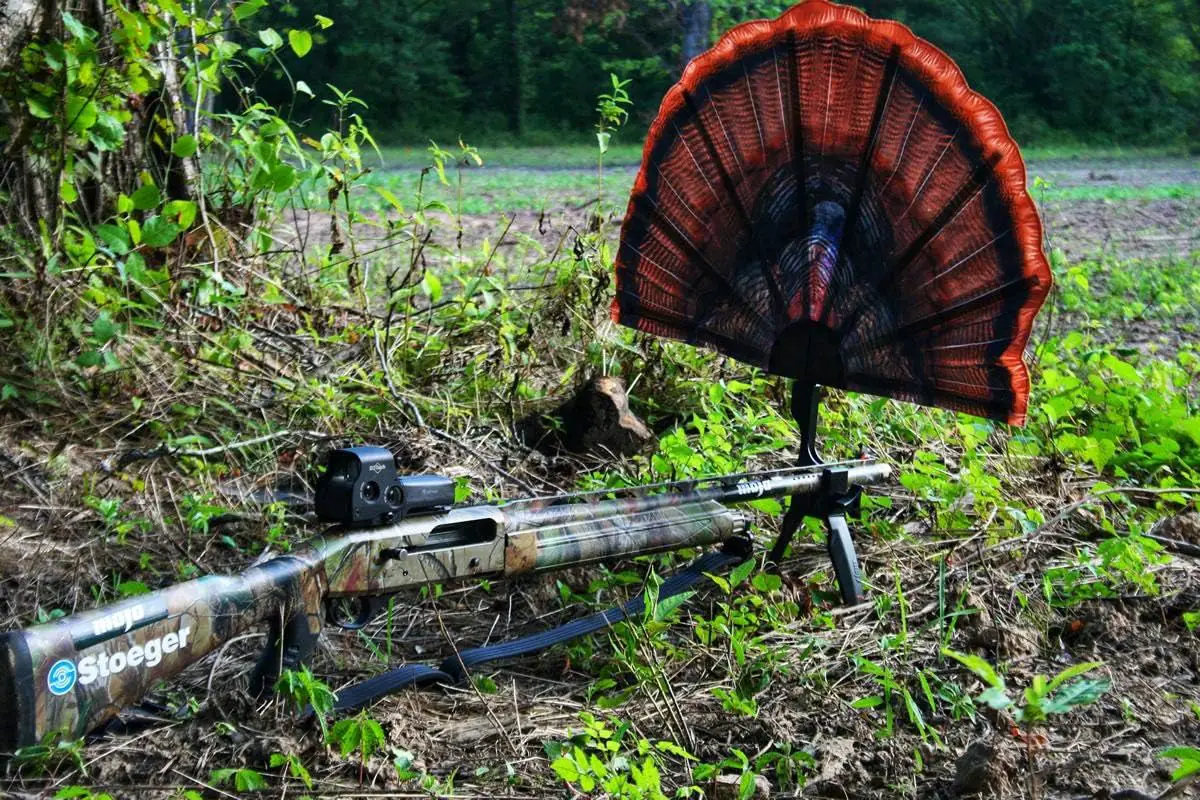
The Bottom Line
We can debate tactics and gobbler behavior all day. But nothing trumps basic firearms safety and respect for fellow hunters. If a tactic introduces serious risk, it's time to reevaluate our priorities.
Strategy | What It Is/How It Is Done | Considerations/Remarks |
|---|---|---|
| Tail-Fanning | Using a fake or real turkey tail fan to mimic a receptive hen, aiming to lure in a gobbler. | * High-risk tactic due to visibility and potential to be easily mistaken for a real turkey by other hunters. * Obscures your own vision, making it harder to identify other hunters or movement. * Creates a false sense of security, potentially leading to less vigilance. * Movement of the fan can draw unwanted attention. |
| Natural Concealment | Using existing terrain (trees, brush, landforms) to blend in and minimize your silhouette. | * Requires careful scouting and may limit your field of view. * |
| Strategic Decoy Placement | Setting up a single hen decoy in a partially-concealed position, making it less conspicuous. | * Still carries some risk, especially in areas with hunting pressure. * |
| Subtle Calling | Using soft yelps, clucks, and purrs to realistically imitate a hen without being overly loud. | * Requires understanding of different hen vocalizations and their meanings. * |
| Patience & Observation | Taking the time to watch gobbler behavior, identify potential hazards, and wait for a clear, safe shot. | * Might mean missing out on quick opportunities, but prioritizes safety and ethical hunting. * |
| Terrain-Based Ambush | Utilizing natural features like ridges, dips, or thickets to conceal yourself and set up ambush points along likely travel routes. | * Requires good knowledge of the hunting area and how turkeys use the landscape. * |
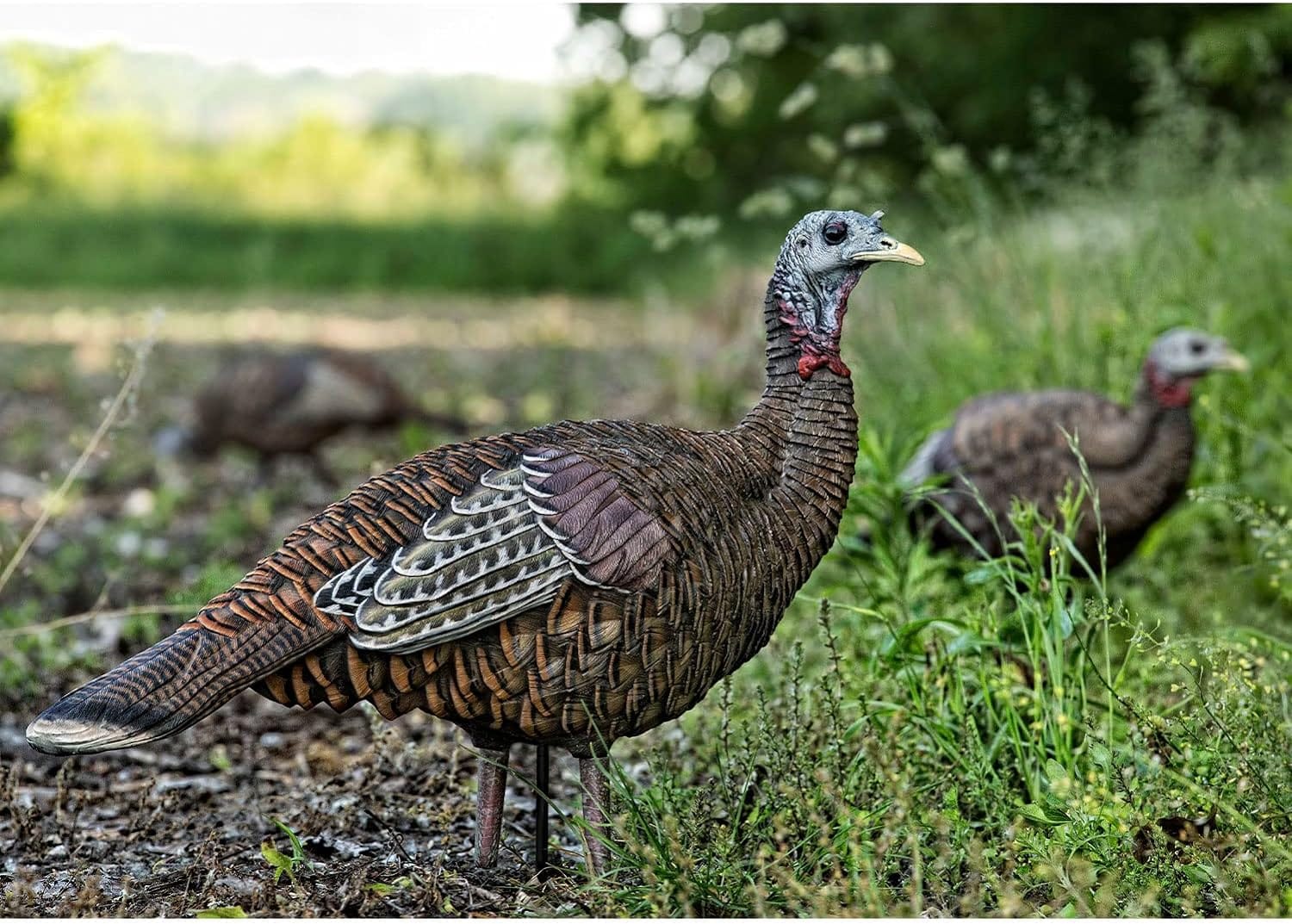
It's Often a Losing Bet: Effectiveness
Those YouTube clips and hunting show segments where a fired-up gobbler charges the tail fan? Sure, it happens. But for every success story, there are a dozen wary toms that see through the trick, or simply don't react as expected.
Let's break down why a fanning isn't the guaranteed gobbler magnet some might think.
Savvy Gobblers & the Illusion
- Turkey Eyesight: Their vision is sharper than ours – the colors and details of a decoy, even a "realistic" one, often don't pass the test up close.
- Natural Waryness: Especially late season, experienced gobblers have survived by being cautious. A lone "hen" suddenly appearing with that picture-perfect fan might raise their suspicions.
- Beyond the Visual: Turkeys use multiple senses. The lack of hen vocalizations accompanying the fan can create a mismatch that puts gobblers on alert.
Unpredictable Reactions: There's No Script
Even if the gobbler buys into the fan initially, there's no telling how he'll react:
- The Hang-Up: He might approach partway, then hang back at 50 yards, refusing to close the distance. This leads to frustrated hunters abandoning their setup.
- The Charge… and Miss: A fired-up gobbler might charge in, only to swerve at the last second, realizing the deception.
- The Disinterested Tom: Sometimes, they simply ignore the fan completely, focusing on real hens or other activities.
The Smarter Play: Outsmart, Don't Out-Gadget
Tail-fanning can encourage a "gimme" mentality, when the real thrill is in adapting to the gobbler's behavior. Here's how thinking beyond the fan leads to more consistent success:
- Terrain is Your Weapon: Use natural cover, ridges, and field edges to position yourself where gobblers are likely to travel, no flashy decoys required.
- Patience Pays Off: A henned-up gobbler might need coaxing. Set up and stay put, using soft calls intermittently to pique his curiosity without spooking the hens.
- Master the Calls: Learn those subtle variations – the yelp of a disinterested hen, a mildly agitated cutting sequence – these often trigger a stronger response than visual decoys.
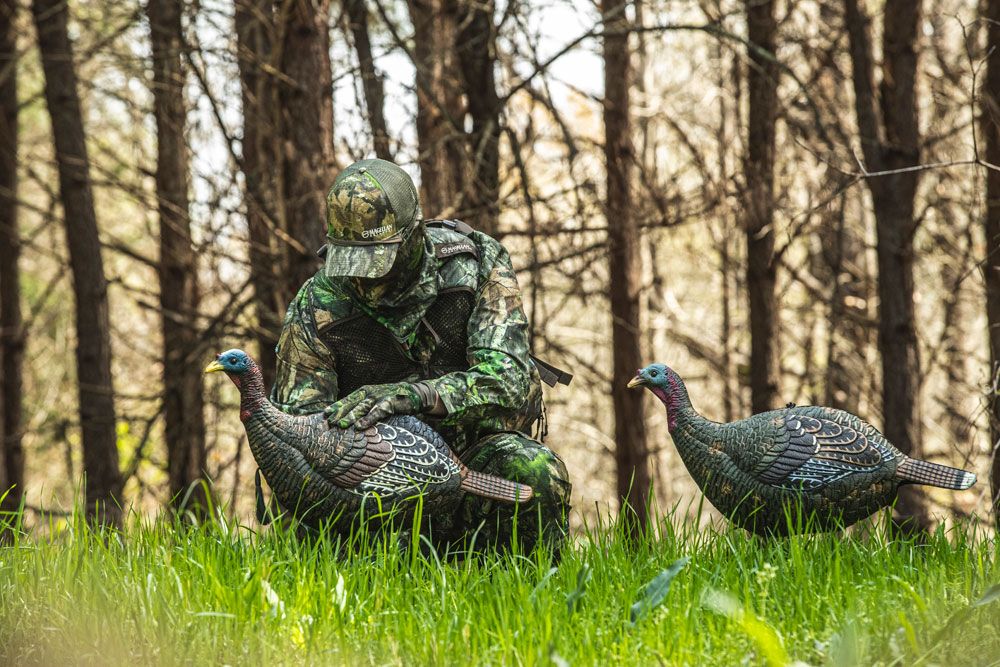
The Hunt is More Than the Kill: Strategy
There's something uniquely satisfying about outsmarting a gobbler with skill and woodsmanship, not gimmicks. Tail-fanning can become a crutch, making us lazy hunters and robbing us of those hard-earned victories.
The Challenge is the Reward
Think back to your most memorable hunts. Was it the easiest gobbler, fooled by a fanned-out tail? Probably not. It was likely that stubborn tom you outsmarted through careful observation, patience, and precise calling. That's the essence of turkey hunting.
Using Terrain & Gobbler Instincts to Your Advantage
Instead of relying on a visual trick, learn how to turn the landscape into your accomplice:
- Strut Zones are Key: Focus your scouting on pinpointing these open areas. Position yourself near the entry/exit points, not in the wide open where you'll be easily spotted.
- Travel Corridors: Identify the routes gobblers use between feeding and strutting areas. Set up ambushes along these natural pathways.
- Gobbler Impulses: Angry gobbles, agitated drumming, those are signals telling you where to be and how to adjust your tactics. This intel is far more valuable than a decoy.
Advanced Calling: Your Best Weapon
Mastering subtle calling sequences gives you the flexibility to respond to a gobbler's mood and create realistic hen scenarios that draw them in:
- The Lonesome Hen: A series of soft, intermittent yelps can pique a gobbler's curiosity without seeming too eager.
- The Challenge Cut: A sharp cutting sequence can either mimic a rival hen or trigger a territorial response in a dominant gobbler.
- The "Contentment" Seduction: Soft clucking and purrs alongside a hen decoy can convince a nearby gobbler there's no need to rush over.
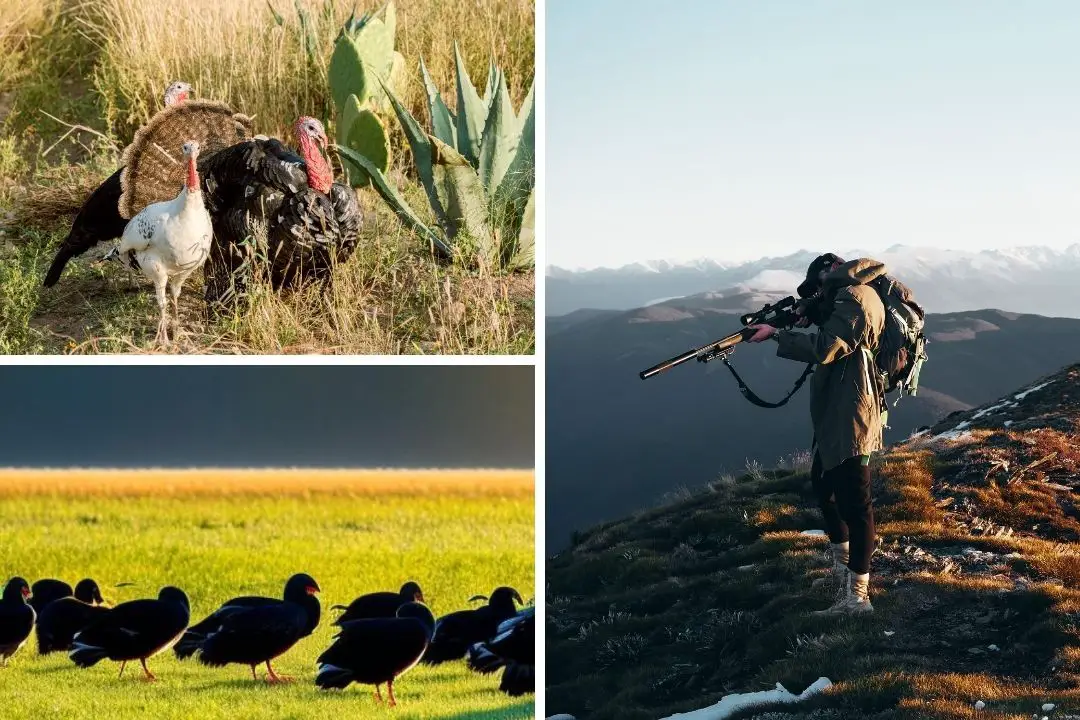
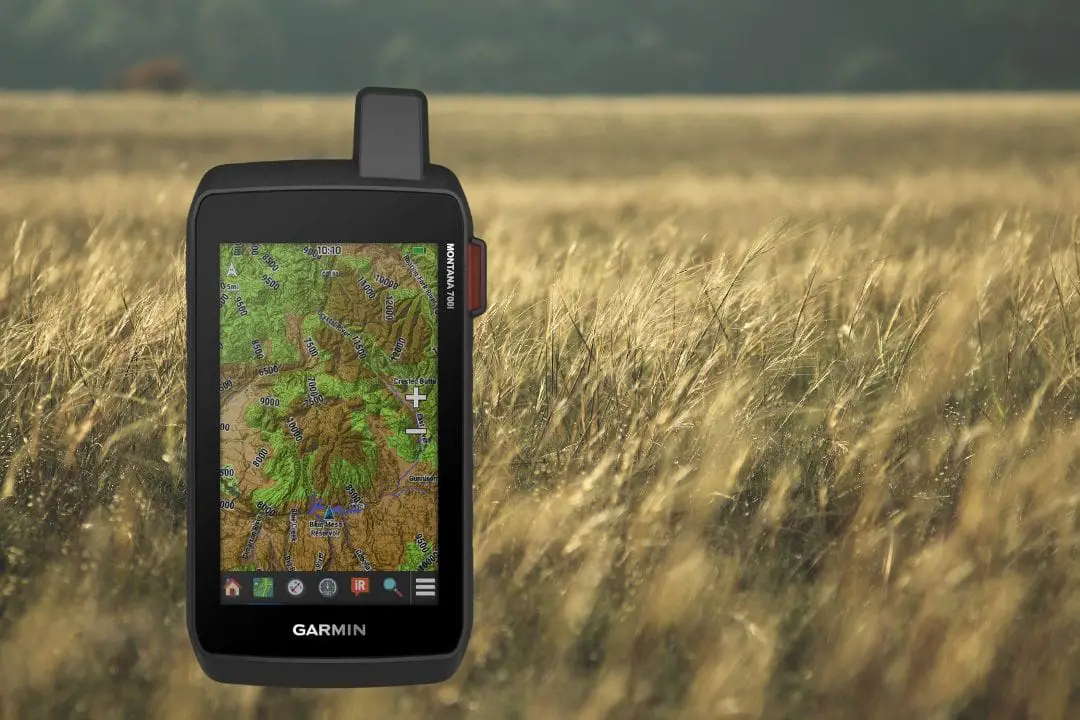
Gobbler Behavior: Shifting Tactics Through the Season
Any seasoned turkey hunter knows the woods aren't static. Gobblers change their patterns throughout the spring, and the tactics that worked early on might get you nothing but silence later in the season. Let's break down those behavioral shifts and how to stay one step ahead of those wary toms.
Early Season: All Fired Up
- The Gobbler Mindset: They're driven by the breeding urge – finding hens is top priority. This makes them bolder and more responsive.
- Your Advantage: Aggressive gobbling and strutting give away their location. Basic hen yelps and a visible decoy can often seal the deal.
- But Be Careful: Don't overcall. An eager but wary gobbler might hang up just out of sight. Less is often more in the early season.
Mid-Season: Hens Take the Lead
- The Challenge: Gobblers paired up with hens become frustratingly unresponsive. Those hens know the game, and they'll often lead the gobbler away from danger.
- Change Your Tune: Subtle clucks and purrs, mimicking a content hen, might work better than aggressive yelps at this stage.
- Use the Terrain: Hens will use woods, brush, and hills to break line of sight and lure the gobbler away. Anticipate their moves, set up in ambush spots.
- Patience is Key: A henned-up gobbler takes time. Stay put, let the hens do the work – they might bring him right to you eventually.
Late Season: Targeting the Loners
- Where Are They?: Gobblers without hens are still out there, but less vocal. Focus on secluded fields, strut zones near thick cover, or food sources.
- The Right Call: A lonely, searching gobbler might respond well to a series of lost, plaintive yelps.
- Don't Give Up: Late-season birds have seen a lot of pressure. It might take several hunts, varying your location and calls, to finally connect.
Behavioral Shifts and Hunting Tactics
Season Phase | Gobbler Mindset | Hunting Tactics |
|---|---|---|
| Early Season | Focused on breeding, highly responsive to calls. | *Aggressive yelps, clucks, and gobbles can be effective. * Visible decoys can attract attention. * Patience is still important – gobblers might hang up out of sight. |
| Mid-Season | Gobblers paired with hens become less responsive and more cautious. | * Subtle calls (soft yelps, purrs) mimic a contented hen, potentially luring him away from the group. * Focus on terrain use: anticipate how hens will move, and set up ambushes along those routes. * Patience is crucial: a henned-up gobbler might take hours to approach. |
| Late Season | Gobblers without hens might be less vocal but still seeking mates. | * Focus on isolated fields and food sources where lone gobblers might congregate. * Series of lost, plaintive yelps can imitate a searching hen. * Scouting is key to pinpoint these late-season hotspots. |
These are general patterns, influenced by hunting pressure, weather, and regional variations. The key is to scout, observe, and adapt – that's what makes a consistently successful turkey hunter.
When It Might Be an Option (Sparingly): Risk Mitigation
Let's be real, there might be a handful of extremely specific situations where a tail fan could be considered less reckless. But I want to emphasize the words "might" and "less reckless." This is never a first-choice tactic.
The Solo, Open Field Scenario
- Vast, Unpressured Land: If you're hunting turkeys in huge agricultural fields, with absolute certainty no other hunters are around, the risk is slightly reduced.
- Know Your Target: You've scouted, you know the gobblers frequent a particular field corner... and they're consistently responding to your calls but hanging up at the treeline.
- Maximum Visibility: Your setup allows you to see 360 degrees, minimizing the chance of another hunter mistaking you for prey.
Even Then, Proceed with Caution
- Constant Scanning: Don't get tunnel vision on the gobbler. Be vigilant for any sign of movement, human or otherwise.
- Prioritize Movement: A slight shift in your position, mimicking real turkey behavior, can be more effective than relying solely on the fan.
- The "Last Resort" Mentality: If subtle calling and natural cover use aren't working, the tail fan is maybe an option. But even then, ask yourself – is one gobbler worth compromising safety principles?
Hunting Incident Factors: When Things Go Wrong
Factor | Description | How It Increases Risk |
|---|---|---|
| Poor Visibility | Low light (dawn, dusk), fog, dense vegetation, etc., make it difficult to clearly identify targets. | Hunters might misidentify partially visible shapes or movements as game animals. |
| Camouflage | Clothing designed to blend with surroundings can make hunters nearly invisible to others. | Increases the likelihood of being mistaken for prey, especially if movement is involved. |
| Lack of Target Identification | Firing before positively confirming the target is a legal game animal. | Tragic accidents can occur when hunters shoot based on sound, partial glimpses, or assumptions. |
| Unexpected Movement | Sudden movement, rustling in brush, or a flash of color can be misconstrued as an animal. | Hunters might react instinctively, firing without proper identification. |
| Focus on the Decoy | Decoys, calls, or other tactics that fixate the hunter's attention narrowly on one area. | Decreases situational awareness, making it easier to overlook potential threats or other hunters. |
The Importance of "Why"
Knowing when to hold back, even when a tactic is technically "allowed," is the mark of a truly responsible hunter. If you ever consider using a tail fan, always critically assess the risk and be ready to prioritize safety over a quick shot.
Closing Thoughts
Remember, the best turkey hunts aren't about the gear in your pack. They're about outwitting those wary, unpredictable birds with the knowledge and skills you've honed over seasons. Ditching the gimmicks forces you to become a better hunter overall.
The tail fan can be a tempting shortcut. But the true test of our turkey hunting prowess isn't in the gadgets, it's in the strategies born from experience, the respect for our quarry, and the commitment to a safer, more fulfilling hunt for ourselves and those who follow.
As a turkey hunter, you must
→ Embrace the Challenge: There's something uniquely satisfying about a hard-earned gobbler – one lured in through understanding their behavior, mastering the calls, and using the terrain to your advantage.
→ Enjoy The Thrill of Adaptation:Every gobbler, every hunt, is an opportunity to learn and refine your tactics. That constant evolution is what keeps the fire burning.
→ Respect the Quarry: Turkeys deserve a clean, ethical hunt. Foregoing risky tactics aligns with the values of true sportsmanship.
→ Pass on the Legacy: Share this mindset with those new to turkey hunting. Mentor them towards a focus on safety, ethical hunting practices, and the joy of mastering the woodsman's craft.
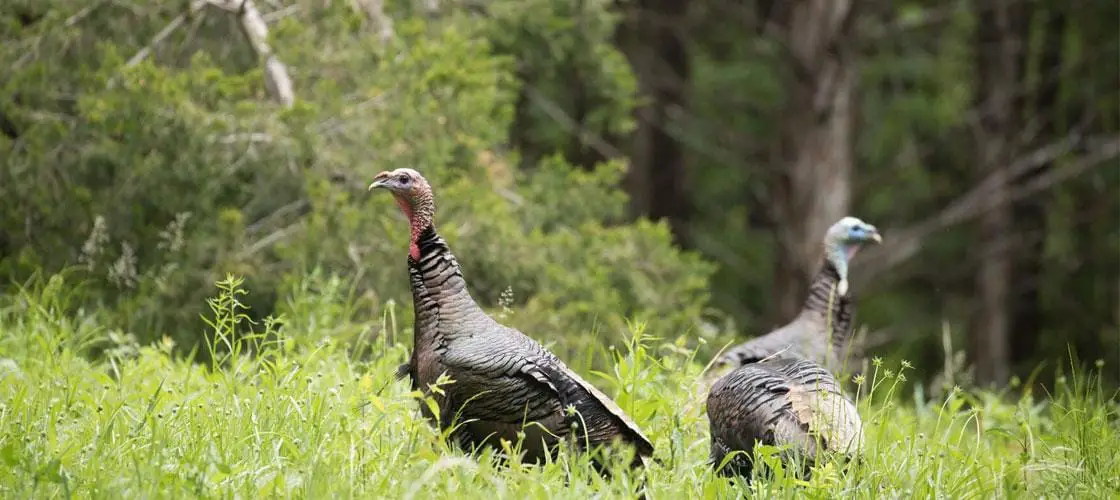
Also, check out our other articles:
